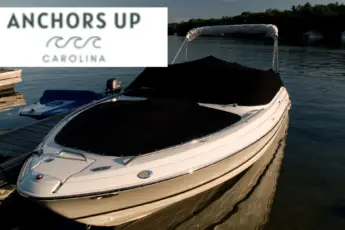Without a doubt, rinsing boat engines after use in saltwater is essential to better preserve the internal components’ lifespan. Performing an internal rinse is made simple by accessories to attach hoses to engines, including inboard, outboard, and inboard outboards. I have owned many boats and worked as a captain; therefore, I know the steps for rinsing boat motors. Are you wondering how to hook up water hose to boat motor. Here is how to do so.
Why Is Rinsing Your Boat Motor Essential
Boat motors used in saltwater require an internal rinse after use. Without a freshwater flush, salt accumulates within the motor and causes internal corrosion. Without question, internal corrosion from salt results in long term damage. Additionally, the engine becomes more prone to seizing.
I personally have seen the effects of failing to perform internal rinses, thus resulting in expensive and avoidable repair. Conversely, vessels run in freshwater do not require a freshwater cleanse after each use.
Importantly, I recommend running hose water periodically through freshwater run boats to remove small particulars. The small particles accumulate and create internal blockages. With that being said, blockages reduce water flow, thus leading to an engine being at risk of overheating. Overheating is detrimental to engines. Boat engines are subject to sudden failure from heat compared to prolonged exposure to salt that has not been rinsed free.
How To Flush Outboards, Inboards, And Inboard/Outboards
On top of understanding how to rinse a boat motor is using the proper device to connect the hose to the motor. Here is the method and device for rinsing outboards, inboards, and inboard/outboards.
Outboard Motors
Unquestionably, outboard motors are the most straight forward when it comes to performing a rinse after use.
The vast majority of outboards are constructed with a hose fitting. The hose fitting allows the hose’s end to thread directly into the engine. For this reason, it is the most simple. Once connected, turn on the water, start the engine, and allow both to run for five minutes. Importantly, turn off the engine before stopping the flow of water.
Conversely, many outboards are not equipped with a hose fitting. In this situation, you will be required to buy earmuffs. Without question, boat earmuffs are nearly identical in appearance to those you wear except. Conversely, water earmuffs are rubber and fit over the outboard motor intake.
To rinse the outboard with earmuffs, connect the hose to the fitting, slide the earmuffs over the intake, turn on the water, start the engine, and flush for five minutes.
Inboard Motors
Inboard motors are unique when flushing because they do not have a lower unit projecting from the back of the boat with intakes. Comparatively, the inboard consists of a shaft running through the transom with a propeller at the end. For this reason, cooling water is not received through the lower unit.
Instead of earmuffs, you must use a flusher mounted on a telescoping pole. Inboard engine intakes are mounted to the hull. The intake connects by hose from the hull intake to the engine.
The flusher pole extends from the ground for support so the plunger shaped flusher reaches the intake. Once the flusher is secured into position, the hose is connected to the plunger.
Lastly, to rinse the inboard, connect the hose to the fitting, ensure the plunger is mounted securely to the intake, turn on the water, start the engine, and flush for five minutes.
Inboard/Outboard Motors
Inboard/outboard motors are comparable to outboard motors. While yes, the engine sits beneath the deck, a lower unit driven by the engine is attached to the vessel’s transom.
When comparing an outboard to an inboard/outboard, the intake is positioned lower and not the hull. For this reason, earmuffs are designed to work with inboard/outboard engines like they are with outboard motors.
Again, to rinse the outboard with earmuffs, connect the hose to the fitting, slide the earmuffs over the intake, turn on the water, start the engine, and flush for five minutes.
Determine The Correct Method To Rinse Your Boat Motor
You won’t need to worry about how to hook up water hose to boat motor any longer. No matter if you own an inboard, outboard, or IO engine, we have you covered. Remember, rinse the watercraft’s engine after each saltwater use and at least monthly with freshwater boats. Take it from me; proper maintenance will keep you on the water longer compared to being held up in the shop.









